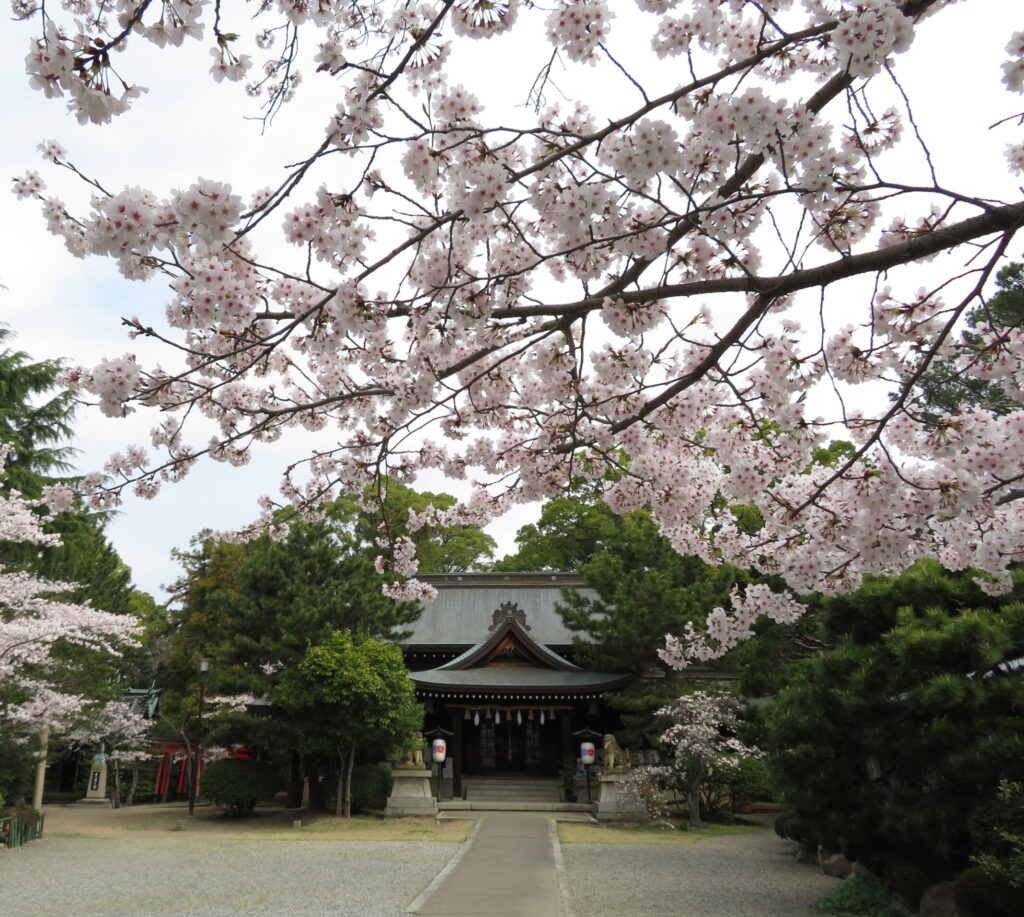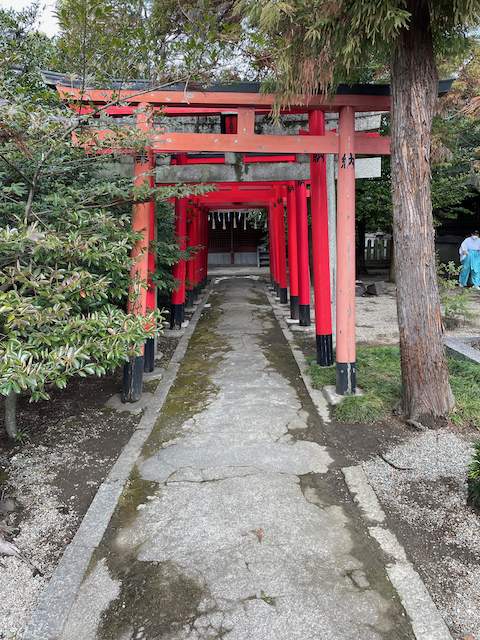
What is Himeji Jinja?
A jinja is a sacred space within Shinto, the native religious tradition of Japan. Each jinja enshrines one or more kami. Himeji Jinja is within the grounds of Himeji Castle, on a sacred hill that is glorious with cherry blossoms in spring and with maple leaves in autumn. There are three jinja in the precincts, known collectively as Himeyama-no-Miya.
Himeji Jinja
Himeji Jinja enshrines Lord Sakai Masachika (1521–1576), the founder of the Sakai family, the last lords of Himeji Castle before the abolition of such lordships in the late nineteenth century. It was founded in 1879 by former retainers, advisers, and wealthy merchants, with widespread support from ordinary residents. In 1927 it was moved to its current site on Himeyama, to the northeast of Himeji Castle. It has been revered by local residents for the prevention of disasters.
The current entrance to Himeji Jinja was, in the days of the castle, a tower gate known as the Yagashira Gate, which defended the castle from attacks through the east third bailey. The jinja venerates the Sakai family, who were lords of Himeji Castle, now a World Heritage Site and National Treasure, for generations.
Sunno Jinja
This jinja enshrines Kawai Sunno (1767–1841), who contributed greatly to revitalising the economy of the whole domain. It was founded in 1957 with the support of many members of the local business community.
Sunno served the lord of the castle, Sakai Tadazane, from around the age of 11, and became a senior adviser at the age of 21. He continued to serve the lords for four generations, continuing as an adviser to Sakai Tadahiro, Sakai Tadamitsu, and Sakai Tadanori. He laid foundations for Himeji that still affect us today, and saved the region from poverty, contributing in many fields. His contributions to industry included the development of jinja sanctuaries, sea salt production, port construction, and rice agriculture, as well as supporting the manufacture of embroidered cloth, leather, sweets, and sake. He also made great contributions to education, founding Jinjusan, a private school, and working at Kokodo, the school for samurai of the domain. He is widely venerated by the people of Himeji as a kami of industry and scholarship.
Iwakura Inari Jinja

This Inari Jinja enshrines Ukanomitama-no-Mikoto. The jinja was, for a long time, in the Bozu Machi region of Himeji, but it was moved into the precincts of Himeji Jinja in 1925. Inari is a popular kami across Japan, associated with rice and successful harvests, and with success in business more generally. Iwakura Inari Jinja has several red torii gates, which is common for these jinja.
At the Setsubun Matsuri on February 3rd, the festival is held in the ancient style, driving out oni demons that are symbolic of ill-fortune. The summer matsuri of the jinja is held on the first Sunday in August, with a sacred ceremony involving purification by the scattering of hot water.
Access
Himeji Jinja is a five minute walk from the main entrance of Himeji Castle, to the right of the keep a short distance back.
More Information
Annual Festivals
A number of festivals (“matsuri”) are held at the jinja over the course of the year.
Paying Your Respects
There are traditional ways to pay your respects to the kami at each jinja.
Omamori, Goshuin, Ofuda
Omamori amulets, goshuin seals, and ofuda are all items you can receive at the jinja.